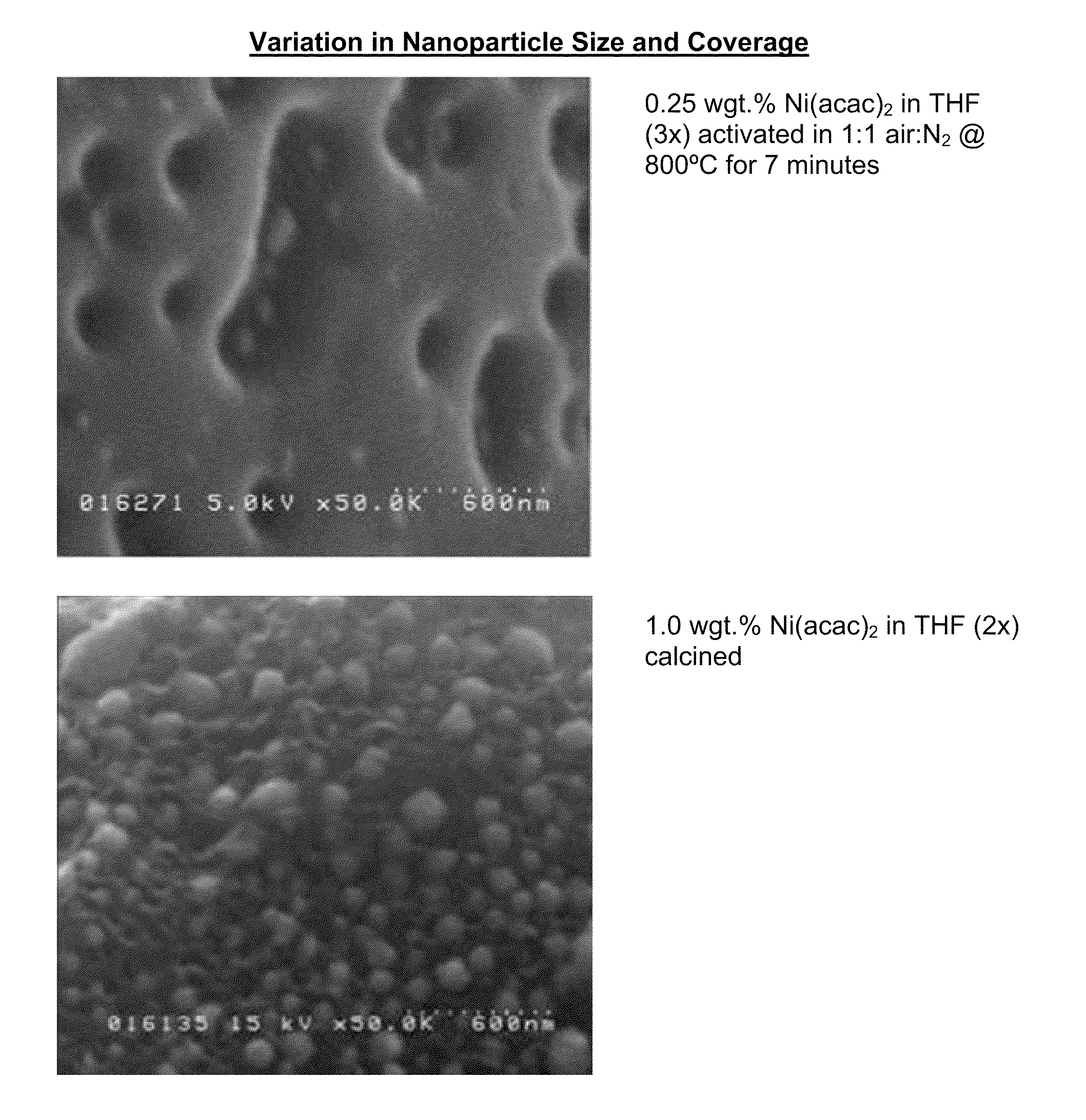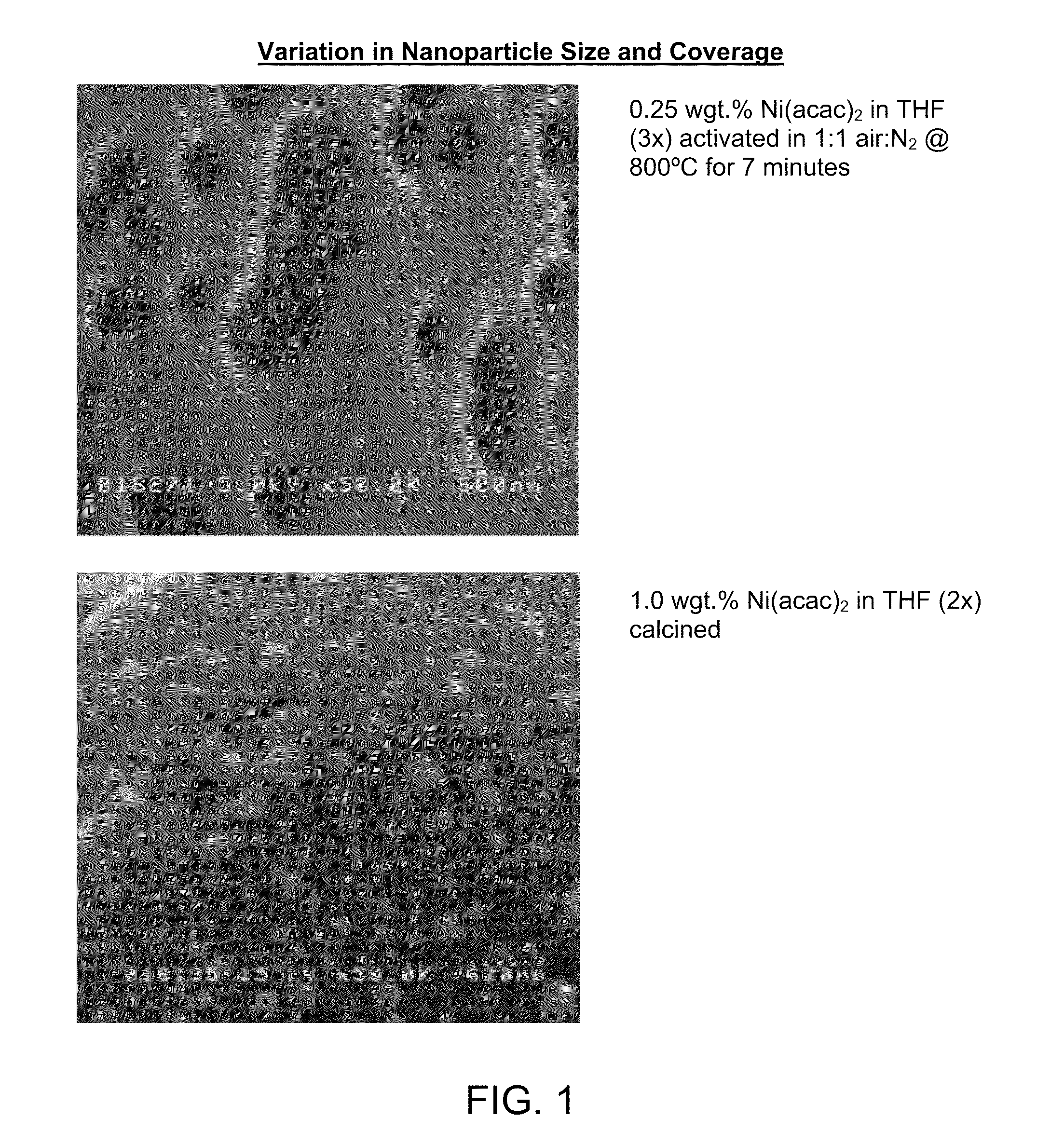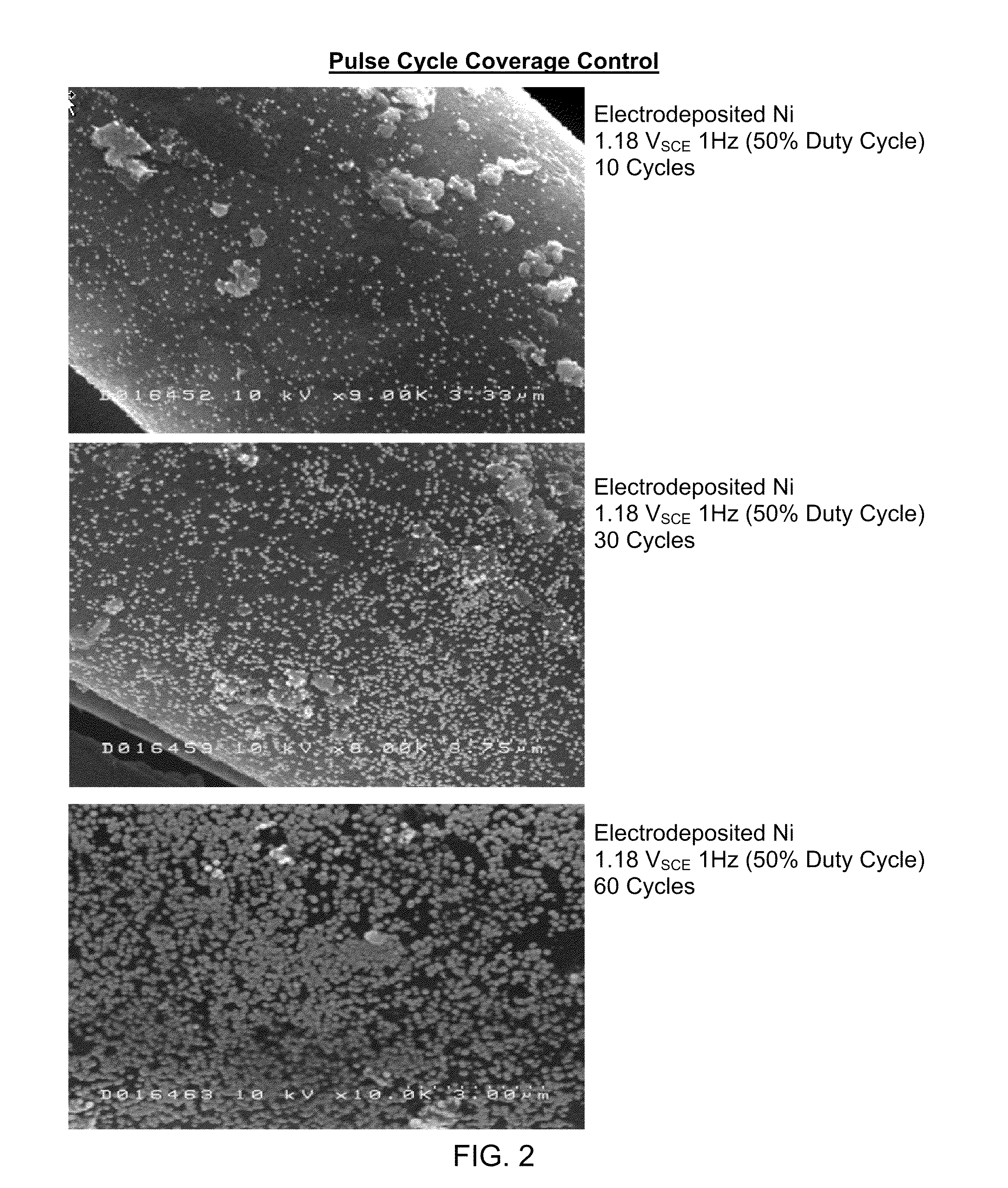Controlled electrodeposition of nanoparticles
a nanoparticle and electrodeposition technology, applied in the field of activated carbons, can solve the problems of marginal or unacceptable performance of current technology, too high cost, and each approach has significant limitations, and achieve the effect of enhancing the rugosity and proximate exterior, and enhancing the rugosity of the carbon surfa
- Summary
- Abstract
- Description
- Claims
- Application Information
AI Technical Summary
Benefits of technology
Problems solved by technology
Method used
Image
Examples
Embodiment Construction
[0020]Enhanced methods of engineered nanoparticle deposition on carbon and conductive carbon precursors have been discovered and are described herein. General nanoparticle catalytic activation means enhancing the rugosity and proximate exterior of carbon materials have been described in U.S. patent application Ser. No. 11 / 211,894, filed Aug. 5, 2005, and U.S. patent application Ser. No. 12 / 070,062, filed Feb. 14, 2008, the entire contents of each are incorporated herein by reference, except that in the event of any inconsistent disclosure or definition from the present application, the disclosure or definition herein shall be deemed to prevail. Throughout this description and in the appended claims, the following definitions are to be understood:
DEFINITIONS
[0021]The term “rugosity” used in reference to carbons refers to the difference between actual surface area and theoretical geometric area in accordance with the definition in the IUPAC Compendium of Chemical Terminology, 2nd edit...
PUM
| Property | Measurement | Unit |
|---|---|---|
| Time | aaaaa | aaaaa |
| Time | aaaaa | aaaaa |
| Time | aaaaa | aaaaa |
Abstract
Description
Claims
Application Information
 Login to View More
Login to View More - R&D
- Intellectual Property
- Life Sciences
- Materials
- Tech Scout
- Unparalleled Data Quality
- Higher Quality Content
- 60% Fewer Hallucinations
Browse by: Latest US Patents, China's latest patents, Technical Efficacy Thesaurus, Application Domain, Technology Topic, Popular Technical Reports.
© 2025 PatSnap. All rights reserved.Legal|Privacy policy|Modern Slavery Act Transparency Statement|Sitemap|About US| Contact US: help@patsnap.com



